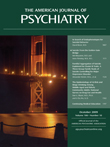Assessment of Autism Spectrum Disorders
Autism spectrum disorders are a classification of diagnoses that share a common symptom picture across three primary core deficit areas: 1) atypical or qualitative impairment in social interaction, 2) qualitative impairment in communication, and 3) the presence of repetitive and stereotyped patterns of behavior or activities. Interest in the autism spectrum disorders and the complex ways these symptoms affect individuals and families has burgeoned in recent years. Most likely fueled by the reported increases in the incidence and prevalence of individuals diagnosed with autism spectrum disorders, a heightened public interest has led increasing numbers of clinicians and researchers to enter the ever-growing autism community. With so many professionals invested in working with individuals with autism spectrum disorders, a comprehensive guide detailing the standards of best practices in the diagnostic assessment and evaluation of this patient population had been sorely needed. This volume by Goldstein et al. is well timed to fill the void.
Assessment of Autism Spectrum Disorders comprises 13 chapters, each authored by experts in the assessment and evaluation of autism spectrum disorders. The volume editors drew on talents of the international autism community and cover a wide array of topics critical to understanding the valid and reliable assessment of autism spectrum disorders. The preface explains that the volume is geared toward experienced clinicians across disciplines as well as graduate students new to the field of autism spectrum disorders, and it is “user friendly” for use by parents and other allied professionals. The authors have accomplished their objective in grand fashion. This book has something for everyone and does not shy away from tackling the controversial issues facing the autism community. For example, in a chapter entitled “The Epidemiology of Autism Spectrum Disorders,” Wing and Potter provide a cogent review of the epidemiological studies to date and then directly address the rise in the incidence and prevalence of autism spectrum disorders. They state that the widening of the diagnostic criteria, as well as a greater awareness among professionals and parents, can account for much of the increases, although they acknowledge that the extent to which there has also been a genuine rise in the number of children with these disorders remains an open question.
The chapter “Subtyping the Autism Spectrum Disorders: Theoretical, Research, and Clinical Considerations,” by Klin, skillfully elucidates the benefits that subtyping would bring to the field, emphasizing contributions to etiology, genotype, brain pathology, pathogenesis, and behavioral expression of autism spectrum disorders, while systematically explaining the challenges inherent in such an effort. Klin concludes that the heterogeneity in autism spectrum disorders may reflect the variance in onset patterns and that although the “derailment of socialization” is common across individuals with autism spectrum disorders, it is the “timing of the disruption that may be the dimension generating variability in syndrome expression.”
The volume editors wisely devoted a number of chapters to practical suggestions and specific recommendations for the assessment of individuals for whom an autism spectrum disorder is suspected. Beginning with the chapter by Shea and Mesibov, “Age-Related Issues in the Assessment of Autism Spectrum Disorders,” the reader is treated to detailed recommendations for the assessment of social behavior, speech, language and communication, and neuropsychological functioning. A rich chapter by Klinger, O’Kelley, and Mussey reminds us that the assessment of intellectual functioning is essential to determine whether an autism spectrum disorder is present, to evaluate individual strengths and weaknesses, to measure treatment effectiveness, and to aid in long-term prognosis and planning. Case examples are offered throughout these clinically oriented chapters to enhance the accessibility of the information provided. The chapter by Deprey and Ozonoff on the assessment of comorbid psychiatric conditions tackles a topic that up to this point has received little attention, and with good reason. Working with individuals with autism spectrum disorders and coexisting mental health conditions requires “additional training and expertise in both traditional mental health conditions and neurodevelopmental disorders”—a combination of skills and training that is difficult to obtain. Given the increased risk for developing psychiatric symptoms, such as depression, anxiety, and attention deficit hyperactivity disorder in persons with autism spectrum disorders, it is critical that professionals with specialized training be included in the diagnostic process to enhance treatment planning.
At the end of the volume, the editors tell us that a recent Google search for “autism” resulted in 2.5 million pages on the topic, and “assessment of autism” yielded over 600,000 pages. Thus, it is nearly impossible for clinicians and families to wade through the vast amounts of available information in order to separate out the wheat from the chaff when tackling the issues relevant to the assessment of autism spectrum disorders. Goldstein et al. have taken on this enormous task and, in doing so, have created an invaluable, accessible volume that has made the lives of professionals committed to working with individuals with autism spectrum disorders a little bit easier.



